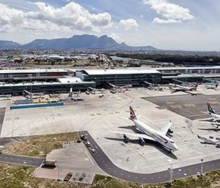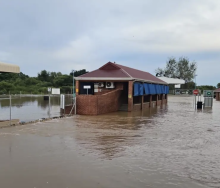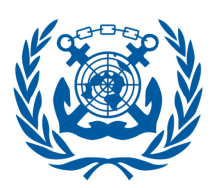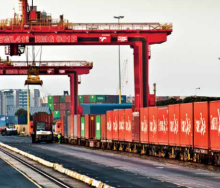International air, ocean, and road freight services provider DHL Global Forwarding has expanded to Zimbabwe, which it believes is on the cusp of new economic growth, to give businesses in the Southern African Development Community (SADC) instant access to global markets.
DHL Global Forwarding has set up a legal entity currently employing eight graduate trainees at a central office in Harare’s central business district.
The branch’s primary purpose is to serve the local industry to international standards.
The offering also includes the DHL subsidiary, Saloodo!, a digital road freight platform that connects shippers and transport providers.
The platform maps all transport processes digitally, including shipment tracking, freight document management, invoicing and payment.
Shuvai Mugadza, country manager DHL Global Forwarding Zimbabwe, said: “Zimbabwe is on the cusp of strong economic growth, and we believe our new offering is well timed to help the country achieve this.
“Our deep knowledge of the SADC and other markets on the African continent will be invaluable to our clients as they prepare for global expansion.”
The company provides the mass network to move heavy machinery by road – mostly imported from China, Germany, and India – for Zimbabwe’s mining and manufacturing sectors. Its airfreight services will support the export of perishable goods, currently Zimbabwe’s most significant export commodity, as well as tobacco and hemp.
He said the decision to open the new branch supported the African Continental Free Trade Area (AfCFTA) agreement, which aims to create the world’s largest free trade area by connecting 1.3 billion people across 54 countries.
“The expansion of DHL’s services in Zimbabwe will also accommodate the global export of agricultural products, a season-driven sector, as well as that of gold, the country’s top mineral export. The focus on exports is constantly changing, and meeting these demands requires agile logistics partners on the ground,” Mugadza said.
Zimbabwe’s central road and air network provide access to the global market through the ports of Durban and Mozambique, and together with southern Africa’s network of roads, railways, ports, and airways, are adequate to meet the current demand of most users.
However, pressure on these networks’ current capacity is mounting.
According to SADC figures, traffic for landlocked countries in the region will increase to 50 million tonnes, swelling nearly three-fold to 148 million tonnes by 2040.
Port traffic will expand from 92 million tonnes to 500 million tonnes by 2027.













